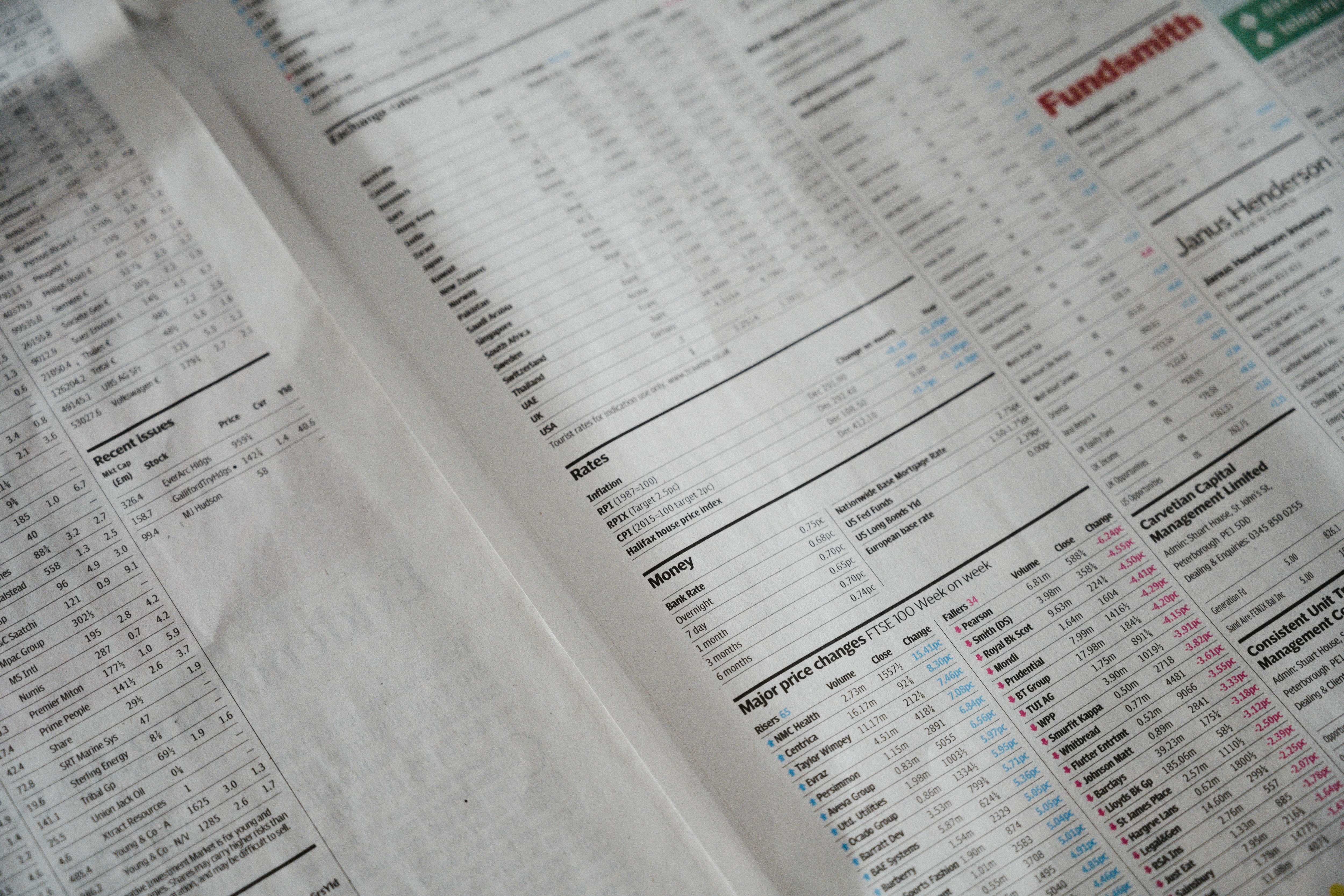
Overview of Current Market Trends
The current state of the markets reflects a notable downturn, particularly evident in the futures sector, which has been influenced by a confluence of factors. Recent economic data releases have played a critical role in shaping investor sentiment, suggesting a cautious approach among market participants. For instance, data indicating slower-than-expected growth in key economic indicators has resulted in declines in futures, as investors recalibrate their expectations for the near future.
Alongside domestic economic considerations, geopolitical tensions have also contributed significantly to the current market environment. Heightened tensions surrounding international relations, notably related to pivotal geopolitical actors, have compounded uncertainties. Notably, Trump’s recent decisions regarding Iran have introduced new layers of complexity to the market landscape, stirring concerns among investors about potential ramifications on global oil supply and broader economic stability.
Investor sentiment, a critical measure of market conditions, appears to be reflecting a degree of anxiety. The volatility in futures is often interpreted as a barometer for broader market health, with current fluctuations underscoring apprehension regarding potential economic disruptions. Additionally, this downturn in futures may also be driven by the anticipation of forthcoming monetary policy adjustments, as market participants speculate how central banks might respond to current economic challenges.
As the markets adjust to these multifaceted influences, analyzing the interconnectedness of economic data, investor mood swings, and geopolitical decisions will be essential. Understanding how these elements interact can provide valuable insights into the future trajectory of market movements. Investors and analysts alike will need to navigate these complexities as they seek to make informed decisions in an increasingly uncertain environment.
Understanding Trump’s Iran Decision Timeline
The timeline of decisions made by former President Donald Trump regarding Iran is marked by significant shifts in U.S. foreign policy, which have had extensive implications not only for international relations but also for market movements, particularly in the oil sector. The cycle began in January 2017 when Trump took office and quickly signaled a departure from the policies of the Obama administration. One of his earliest actions was to publicly criticize the Iran nuclear deal, formally known as the Joint Comprehensive Plan of Action (JCPOA), which had been signed in 2015. Trump’s administration viewed this agreement as flawed, citing concerns over Iran’s nuclear ambitions and regional behavior.
In May 2018, the Trump administration made a pivotal move by withdrawing from the JCPOA, reinstating economic sanctions on Iran. This decision was met with mixed reactions globally, as it aimed to exert maximum pressure on Tehran, thus aiming for significant changes in its behavior concerning its nuclear program and regional activities. The reinstatement of sanctions had a considerable effect on the global oil market, as Iran was a major oil exporter. Consequently, the uncertainty surrounding Iranian oil supplies led to fluctuations in oil prices, illustrating how geopolitical decisions directly influence market sentiments.
Further escalating tensions, the U.S. targeted Iranian General Qassem Soleimani in January 2020, resulting in his death via a drone strike in Iraq. This act significantly raised the stakes between the two nations and meaningful concerns about regional stability, affecting investor sentiment across related sectors. Following this, Iran responded with missile attacks on U.S. bases in Iraq, again inducing volatility in global oil markets due to perceived risks to supply chains.
As events have continued to unfold, the impact of Trump’s decision-making on Iran remains crucial for both U.S. foreign policy objectives and the intricacies of global market dynamics. The timeline encapsulates a complex interplay of diplomatic strategies and their tangible outcomes, which continue to send ripples through the financial landscapes today.
Impact of Geopolitical Events on the Markets
Geopolitical events have a profound influence on financial markets, often inducing fluctuations that can be significant and rapid. The interactions between international politics and market performance are critical for investors looking to navigate periods of uncertainty. President Trump’s stance toward Iran is a prime example of how such decisions can impact investor sentiment and market behavior. As geopolitical tensions arise in the Middle East, especially related to nuclear capabilities and military actions, concerns about stability can prompt market volatility.
In light of Trump’s policies, investor apprehension may lead to more significant fluctuations in commodity prices, particularly oil, which is heavily influenced by geopolitical developments. For instance, threats of sanctions or military engagements can result in immediate increases in oil prices as traders react to potential supply disruptions. Given the Middle East’s central role in global energy supply, any indication of increased tension can trigger a rush to commodities, making the energy sector particularly susceptible to fluctuations in response to geopolitical news.
Moreover, other market sectors also respond distinctly to these developments. The defense industry, for example, often sees a surge in stock prices when geopolitical tensions rise, due to anticipated increases in defense spending. Investors may view companies in this sector as more resilient during times of conflict. Conversely, sectors such as travel and leisure may experience downturns due to increased risks and concerns regarding international stability. Therefore, understanding the interplay between geopolitical events and market movements is vital for investors aiming to manage risk effectively and capitalize on potential market changes.
Ultimately, the responses of various sectors to geopolitical changes underscore the intricate relationship between politics and market dynamics, highlighting the necessity for vigilance in monitoring emerging developments and their implications for market strategies.
Future Market Predictions and Strategies
As we look ahead, the intricate interplay of geopolitical developments, particularly those surrounding U.S. foreign policy decisions like President Trump’s approach to Iran, presents both challenges and opportunities for market participants. The recent shifts in diplomatic relations and their implications necessitate a careful evaluation of potential market reactions. Traders and investors must remain vigilant to identify emerging trends and strategically position themselves for future movements in the market.
One key aspect that looks promising is the importance of diversification in investing. A diverse portfolio can mitigate the risks associated with geopolitical events and economic unpredictability. By spreading investments across various asset classes, including equities, commodities, and bonds, traders can reduce their exposure to potential market shocks. This approach allows investors to navigate fluctuations that may arise from shifts in U.S. foreign policy, particularly concerning conflict or sanctions with nations such as Iran.
Moreover, hedging strategies are essential when dealing with volatility introduced by geopolitical developments. Instruments such as options and futures can act as safeguards against significant market swings. For instance, a trader anticipating a decrease in stock prices due to heightened tensions in the Middle East might employ put options to limit potential losses. This proactive strategy enables participants to protect their investments adequately while maintaining the potential for upside should the market favorably respond to resolution or stabilization of geopolitical issues.
Additionally, monitoring specific economic indicators, such as oil prices, trade balances, and international relations, will be crucial in guiding investment decisions. Fluctuations in oil prices, driven by geopolitical events, often exert substantial influence on global markets, and staying informed can provide valuable insights into predicting market movements. By combining diversified investment techniques, effective hedging, and keeping abreast of relevant economic signals, traders can navigate the evolving landscape prudently and capitalize on opportunities that arise from these complex situations.
